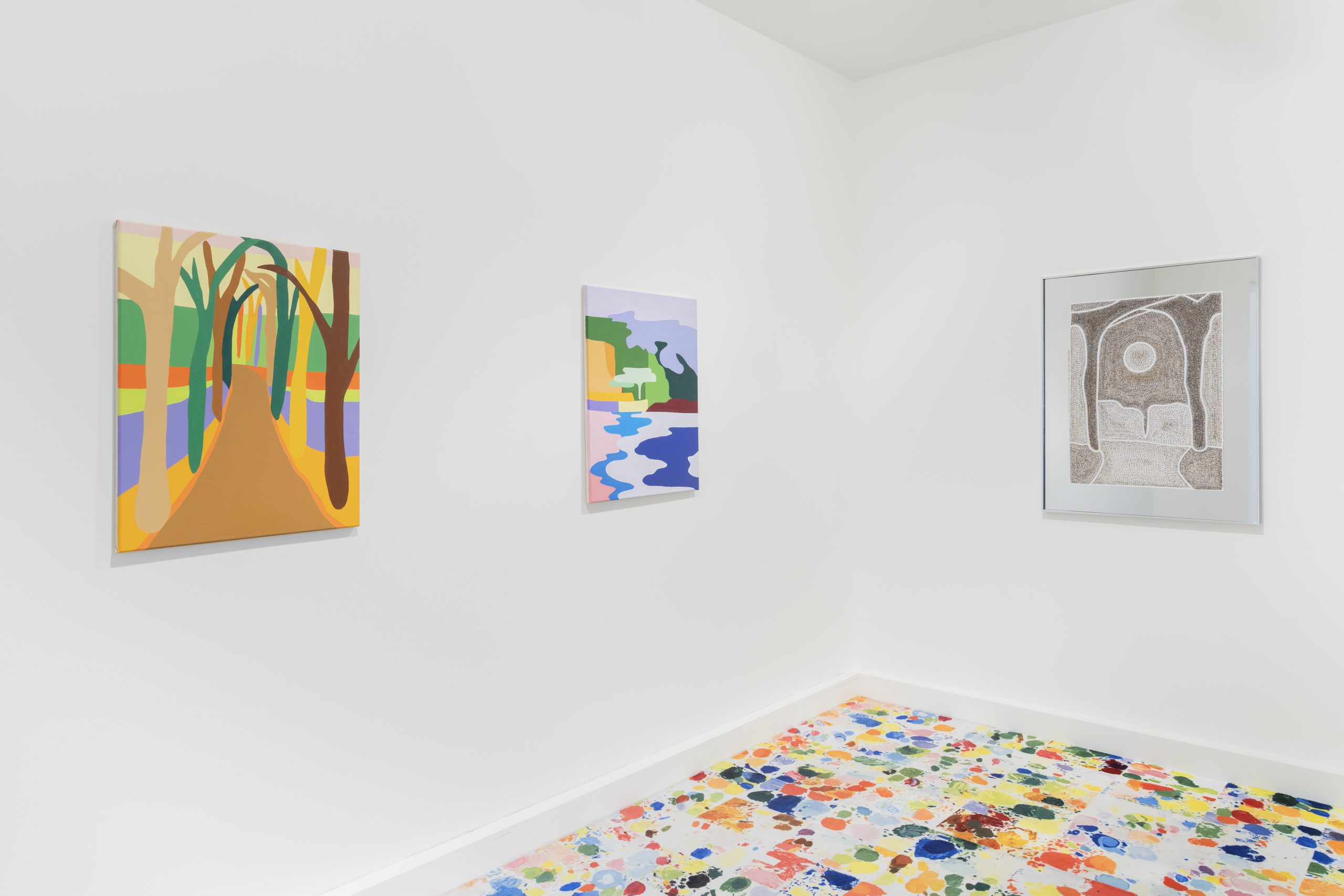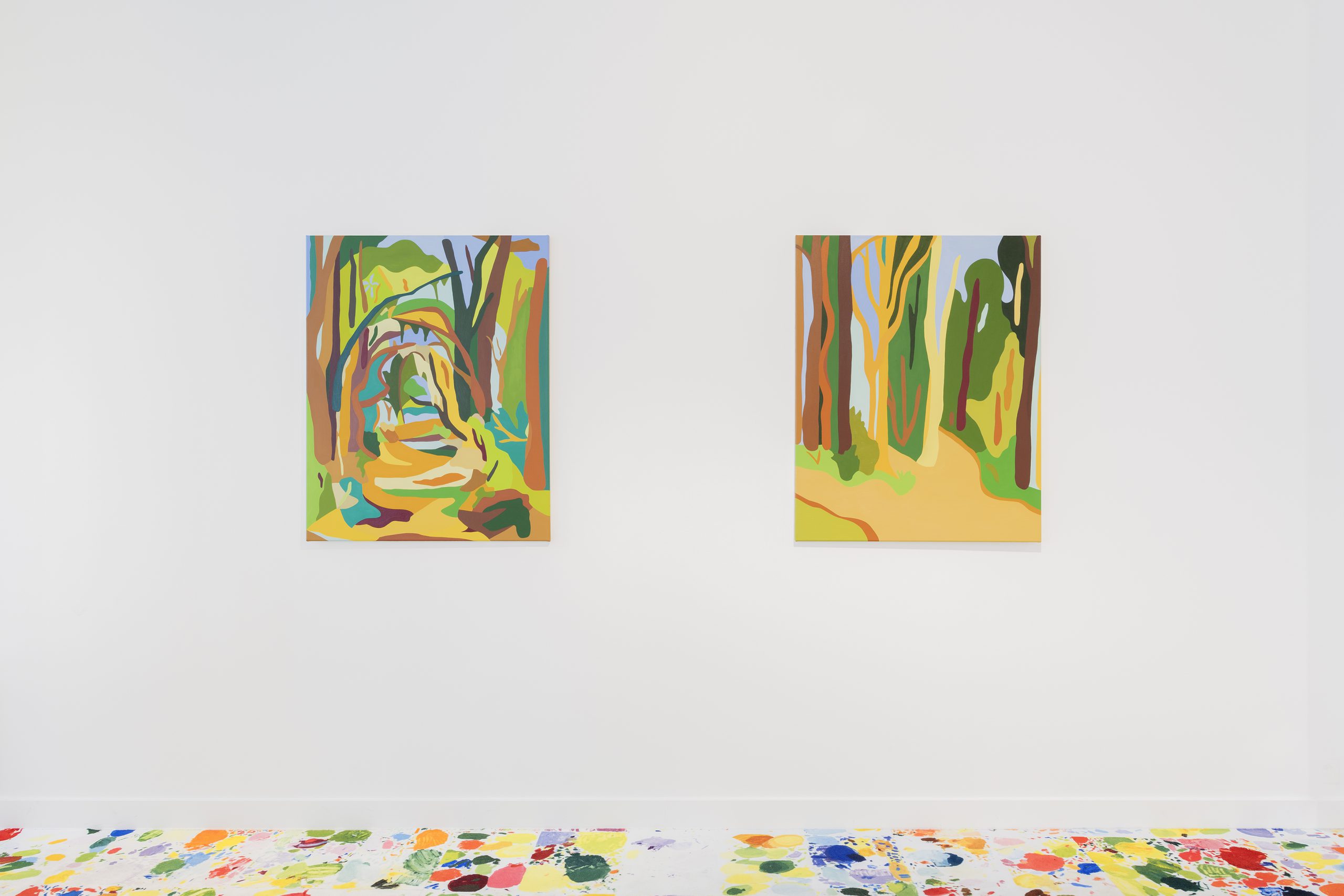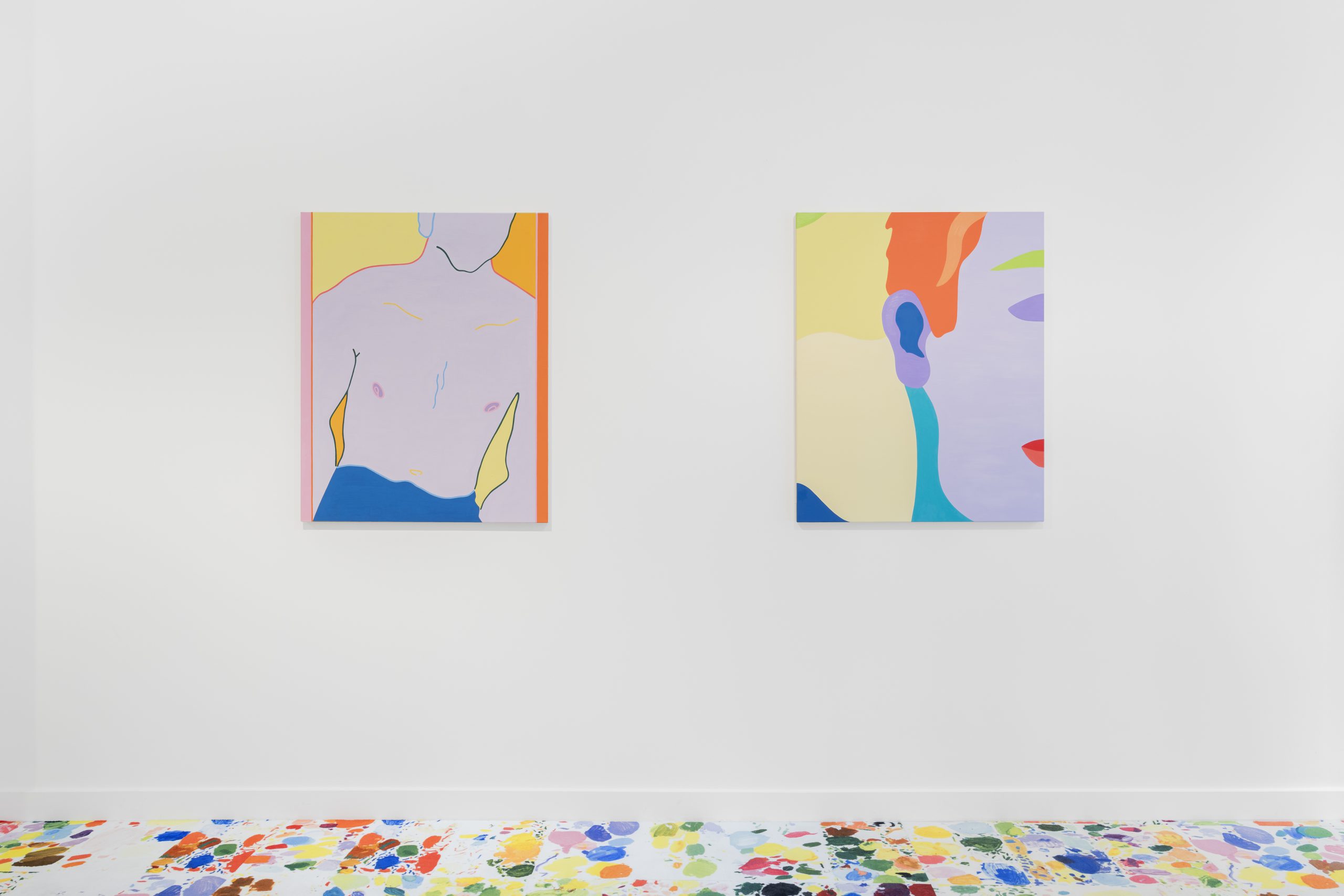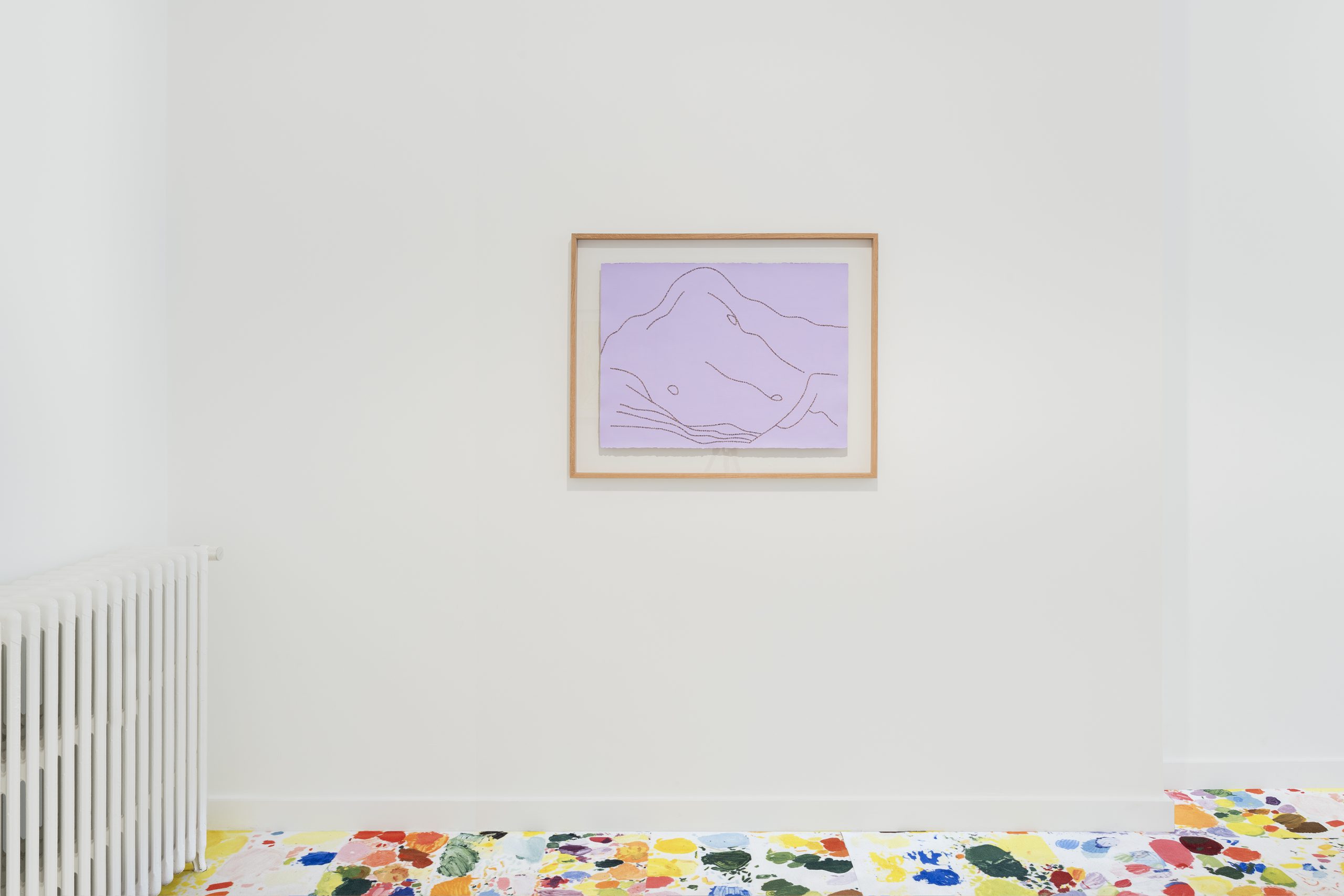Text by Evelyn Simons
In conversation with Tessa Perutz
By bike, I ride from north to south, taking la petite ceinture along the canal from my house to Tessa’s. It’s summertime in Brussels and everyone’s locked in at home. Yet I do feel a sense of holiday when going to her studio; the idea of traveling and reminiscing over places visited or yet to discover. Bright colors take me on an imagined journey of sensorial exploration.
A wave of lavender seduces my nose upon entering. She hasprepared a refreshing hibiscus iced tea. I brought a salad with fresh fava beans, they’re in season now. Over the past few months, Tessa has worked relentlessly. It’s as though she took the imposed stillness of life surrounding us as a way to venture out, deeper than before into herself, into her practice, into new possibilities.
A myriad of materials and techniques arose, her subject matter expanded radically. The lavender that played the leading role in her exhibition Jardin du Midi is now used in her drawings – the meticulously glued lavender flowers trace out continuous lines, building up her iconic and opaque flattened sceneries. There are works on paper, arranged on mirrors and various other surfaces. There is a carpet made up of what seems to be hundreds of painter’s palettes. There is a bench with bold angles and homemade red lacquer finish. There is sand in the paint. Watercolours. And suddenly, there are people.
Evelyn Simons: Who is this guy?
Tessa Perutz: Oh, it’s Joshua Abelow, my friend – you remember? I hosted a reading of his book at his opening here in Brussels.
ES: Who else are you going to paint?
TP: People I admire, some men with interest in exploring the inversion of the male gaze, who are comfortable with me mapping their bodies and faces in paint.
ES: Yeah, it must be pretty intimate, as a viewer we feel super up-close. I love how they’re not immediately recognizable, like anonymous archetypes, raw flesh in lucid, tripped-out colours.
Sometime in November last year, Tessa ventured away from landscape painting, into painting live models. What started as a spontaneous new figurative series, resonated quite differently a few months later once Covid-19 arrived and changed our lives. We discuss this fear that people have now with one another, this alienating suspicion with the human body, the doctrination of distance.
TP: For me, working from the human form came about in a similar way to how my fascination with natural, geographical motifs came to be – in wanting to reflect upon an encumbering, fully physical experience – which also served as the perfect backdrop for what you called the ‘existential ponderings’ in my work.
I find myself wanting to make sense of personal and intimate relationships with the individuals that surround me as well. I find painting a model actually transcends the object-subject relationship, as there’s two of us there, both confronted with an intense intimacy. This process of analysing what I’m seeing, expands into self-reflection as well, thus implying two subjects.
ES: I also feel I encounter that sense of intimacy in your landscapes. There’s always an entryway, a path, a sun or a moon, a portal or a swirling river luring the viewer in – hypnotizing the gaze. Has your work always functioned like this? You’re here now for two years right? Before it was New York and Chicago. I can’t imagine how vast, monumental American landscapes would allow you to be similarly subtle, nuanced but generous with your audience, guiding their gaze so gently as you do with these works.
TP: I do find myself really attracted to the delicacy of the Belgian paysage – and also the interiors as well. It’s the fine detailing, the rich history, maybe even the Magritteesque surrealist humor that one encounters. Remember our night-walk in the Hallerbos, randomly stumbling upon those ponies? So stunning…
ES: The white ones! It was as if their eyes were shining with heavenly lights. What a mystical experience.
TP: See, there are so many curiosities to be found but everything is still so accessible. I feel artistically enriched, having all of this at hand: the coast, the parks, the forests, the lakes, and the wide open, bleached out rolling countryside.
ES: You know what, actually I always feel flattered when one of the places we visited together ends up in your paintings. I mean, I always see you sketching, there’s always a notebook stashed in our picnic basket, but it’s so special to see that moment immortalized as a gros souvenir later on.
TP: This idea of questioning memorabilia is indeed quite crucial to my practice. It’s through the repetition of imagery that I can continue to reflect, fold-in additional musings, and expand as an artist. I paint to explore how things are linked to nostalgia and how they feed back into one another, symbiotically. This idea of redoing things, of growth, is perhaps why seriality is so present. It’s about constantly reexperiencing, to sink deeper and contemplate.
ES: Also because the same motives or sceneries tend to resurface after long stretches of time in your practice. Seeing them reappear with different tonalities, or on a different support, in a different size… feels like an endless sequence of déjà-vus.
Tessa’s work infuses many recurring materials and motifs: gingko trees, the hibiscus flower, eucalyptus, lavender. Their healing characteristics are attributed to a subtle but omnipresent reflection on the notion of life and death, on regeneration.
In this sense, taking the step towards painting people doesn’t feel like such a sudden or dramatic shift.
TP: When developing an exhibition, I take on this experiential way of composing an environment that presses the boundaries of the canon of landscape painting. It is all very intuitive, this building process, though I am fascinated with the way in which nature can mirror the human experience, and how I can make sense of mortality – of loss – and find overlaps between human and natural life cycles.
Take for instance the forest canopy: it seems to depict this iconic moment in near-death experiences, this flash of bright light at the end of the tunnel, but others remark that it looks like a woman’s birth canal. What does it mean to encounter and question regeneration? The vitality and shifts that I observe in nature, and the symbolic value they hold, is my guiding principle in that.
While the beats of Chicago house music hum through her studio, Tessa continues applying lavender flowers, one by one, on paper. A line is forming, at this stage it can be a road leading up to her next destiny, or the curve of a body that we can get to know.






